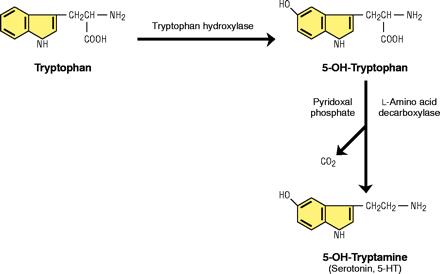
- Institution: Stanford Univ Med Ctr Lane Med Lib/Periodical Dept/Rm L109
- Sign In as Member / Individual
Serotoninergic Chemoreceptive Neurons: A Search for a Shared Function

Serotonin Synthesis and CO2. Primitive cells used the enzyme ribulosebisphosphate (RuBP) carboxylase/oxygenase to fix atmospheric carbon dioxide to produce biologically useful molecules; the same enzyme can alternatively utilize atmospheric oxygen, effectively catalyzing a hydroxylation reaction. The activity of tryptophan hydroxylase (TPH) is the rate-limiting step in 5-HT synthesis and its activity was used by Severson et al. (3) to identify serotoninergic neurons. The second step of 5-HT synthesis involves 5-HT decarboxylase, which cleaves off the alpha carboxyl group to form CO2. The aromatic decarboxylase enzyme is detected in bacteria and in plants has attracted considerable attention because of its role in the biosynthesis of pharmaceutically important monoterpenoid indole alkaloids (23). Thus, a relationship between CO2 and serotonin synthesis has long existed.


